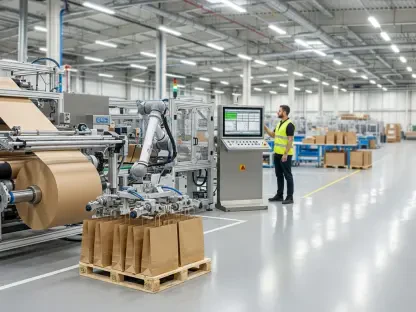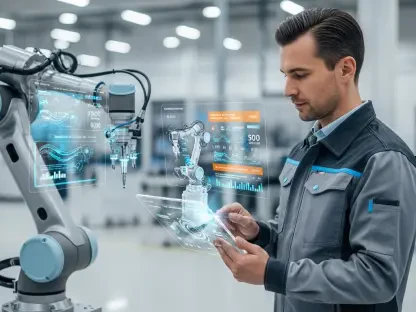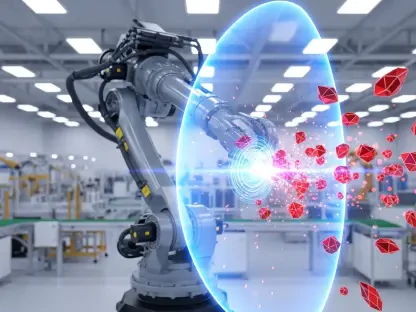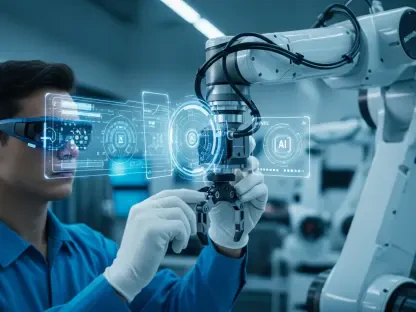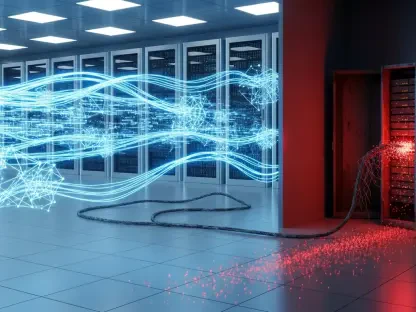Kwame Zaire is a distinguished figure in the world of manufacturing, with a particular focus on electronics and equipment. Known for his innovative perspectives on production management, his expertise extends deeply into predictive maintenance, quality, and safety. Join us as we dive into the cutting-edge processes and technologies from Alloy Enterprises, uncovering how they are shaping the future of cooling solutions for high-performance computing and AI.
Can you explain the Stack Forging process used by Alloy Enterprises for creating copper DLC solutions?
Stack Forging is an advanced fabrication process that begins with digital slicing, powered by Alloy’s proprietary software. The part design is then meticulously laser-cut and the resultant sheets are diffusion-bonded to form a seamless block. This method ensures precise cooling in high-heat areas by enabling tailored features, greatly reducing pressure drops, and eliminating potential leak points found in traditional systems.
How does the diffusion-bonding method in Stack Forging contribute to the effectiveness of the cooling components?
Diffusion bonding is key to creating robust, leak-proof, single-piece components. By fusing the layers on a molecular level, this technique strengthens the material integrity, thus enhancing the thermal efficiency and reliability of the cooling systems. It supports intricate microchannel structures essential for effective direct liquid cooling.
Could you describe the advantages of using copper in direct liquid cooling systems over traditional methods?
Copper’s superior thermal conductivity makes it a prime candidate for direct liquid cooling systems. Unlike conventional materials, copper facilitates rapid heat transfer, reducing hotspots, and maintaining optimal operating temperatures even as workloads increase. This leads to improved system performance and a considerable decrease in energy usage.
What are the specific benefits of achieving a tenfold reduction in pressure drops in cooling systems?
Lowering pressure drops by tenfold significantly cuts the energy required for pumps, allowing the use of smaller, less resource-intensive systems. This results in substantial energy savings and reduces the overall operational costs for data centers, making it an economically and environmentally sound advancement.
How does Alloy Enterprises ensure that their copper cooling components meet ASHRAE standards for chemical compatibility?
Compliance with ASHRAE standards is achieved through rigorous testing and material selection processes. Alloy ensures their components are chemically stable and can withstand the varied operational conditions encountered in high-density data environments, thus preventing corrosion and prolonging system lifespan.
In what ways does the introduction of copper thermal solutions enhance high-performance computing and AI workloads?
By integrating copper thermal solutions, the heat management of high-performance computing environments is markedly improved. This allows for denser racks and more efficient processing, essential for AI workloads that demand substantial computational capability. Copper’s efficiency helps maintain optimal conditions, thus pushing the limits of computational performance.
How significant is the reduction in data center energy consumption with Alloy’s technology, and what impact does this have on sustainability?
A 23% reduction in energy consumption is transformative for data centers. This improvement enhances sustainability by lowering greenhouse gas emissions and reducing reliance on energy-intensive cooling measures like refrigerated HVAC systems. Economically, it translates into reduced operational costs and improved profit margins.
What role does Alloy Enterprises’ technology play in addressing the escalating demands of rack densities and thermal design power?
Alloy’s technology answers these escalating demands by allowing for high-density configurations without overheating risks. Their advanced cooling components support increased rack densities and thermal design powers, essential as server demands grow with AI and high-performance tasks demanding more energy-efficient solutions.
How does Alloy’s approach to using recycled copper and aluminum scrap contribute to sustainable manufacturing practices?
Alloy’s commitment to recycling 100% of copper and aluminum scrap underscores their dedication to sustainability. This practice not only minimizes waste but also reduces the environmental impact of raw material extraction, contributing to a circular economy and demonstrating responsible manufacturing practices.
Can you share early customer feedback or deployment experiences with Alloy’s copper line components?
Initial customer feedback has been overwhelmingly positive, highlighting their components’ ability to achieve target thermal resistance thresholds while maintaining superior pressure drop performance. These results prove effective even in the most challenging configurations, affirming the reliability and performance of Alloy’s innovations.
How might hyperscalers and colocation providers benefit financially from the efficiency gains provided by Alloy’s cooling technology?
Hyperscalers and colocation providers stand to gain significantly from these efficiency improvements through reduced energy bills and enhanced compute density per square foot. By lowering energy costs and eliminating refrigerated cooling, these providers can enhance their power usage effectiveness (PUE) and realize a better return on investment.
What are some key points from the white paper ‘The Future of Liquid Cooling: Novel Microchannel Architecture for Lower Pressure Drop & Higher Thermal Performance’?
The white paper outlines innovative approaches in microchannel architecture that drastically lower pressure drops and enhance thermal performance. It delves into the technical advances that enable improved cooling capabilities necessary for modern computational demands, emphasizing both economic and environmental advantages.
Do you have any advice for our readers?
Embrace advancements in manufacturing technology, especially those centered on sustainability and efficiency. Staying informed and adaptable as we confront rising energy demands will be crucial. Implementing efficient thermal solutions now not only future-proofs facilities but also contributes significantly to broader environmental goals.


